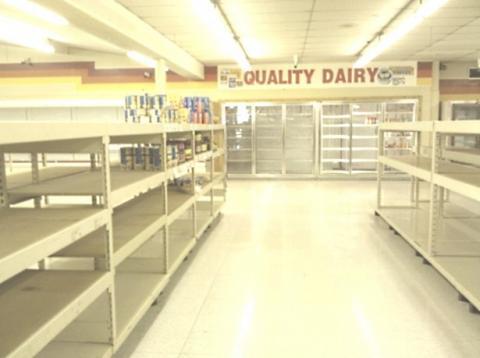U.S. Farmers Issue Dire Warnings of Looming Food Shortages--

by Brian Shilhavy HEALTH IMPACT NEWS
Unless you have a farmer in your family, or in your circle of friends and contacts, chances are that you are among the millions of people in the United States that seldom give thought to how the food you buy and eat is produced.
Ask the typical American where the food on their table comes from, and probably 99.9% of them will answer: the grocery store.
The grocery store is a modern-day retail outlet that most of our forefathers did not enjoy. Prior to the industrial age post WWII, most neighborhoods had local businesses and farmers who supplied the bulk of that community's food, from the milkman who delivered dairy products, to the town butcher who processed meat, to the town baker who produced products from grains, etc.
There was no one-stop shop where one could pick up multiple products called "groceries." Few understand that the modern day grocery store is dependent on a highly technical system that is interdependent on many inputs into the supply chain, and can easily be ground to a halt.
If you have lived through local natural disasters, like a hurricane, or an earthquake, you probably have had a taste of what it can be like when everyone all of sudden needs to buy groceries all at the same time, and then learn that the grocery store shelves are bare.
Panic buying can cause similar disruptions, and most of us got a taste, and that’s all it was, a “taste”, of this in the early days of the COVID-19 lockdowns.
But almost all of the people alive in the U.S. today have not experienced real hardship that produces hunger and starvation, such as what this nation experienced in the 1930s prior to WWII during the “dust bowl” as the nation suffered an economic depression, along with massive food shortages due to crop failures.
We have had economic downturns since WWII, but in general the U.S. has seen prosperous times for over 70 years now, and the current generations alive have become so dependent on the conveniences that modern technology has brought us, that they just assume it will always be there, and fail to realize just how fragile that technology is.
Today, less than 1% of the population of the United States now produces food for the other 99%, thanks to the technological age, so when farmers, particularly farmers with contracts in the commodity food industry, which is by far the majority, speak out with warnings about what is ahead, it is time to sit up and listen, and realize that if you cannot buy food from your usual local grocery outlets, that there will be no one to bail you out if you have not prepared for such a situation.


























